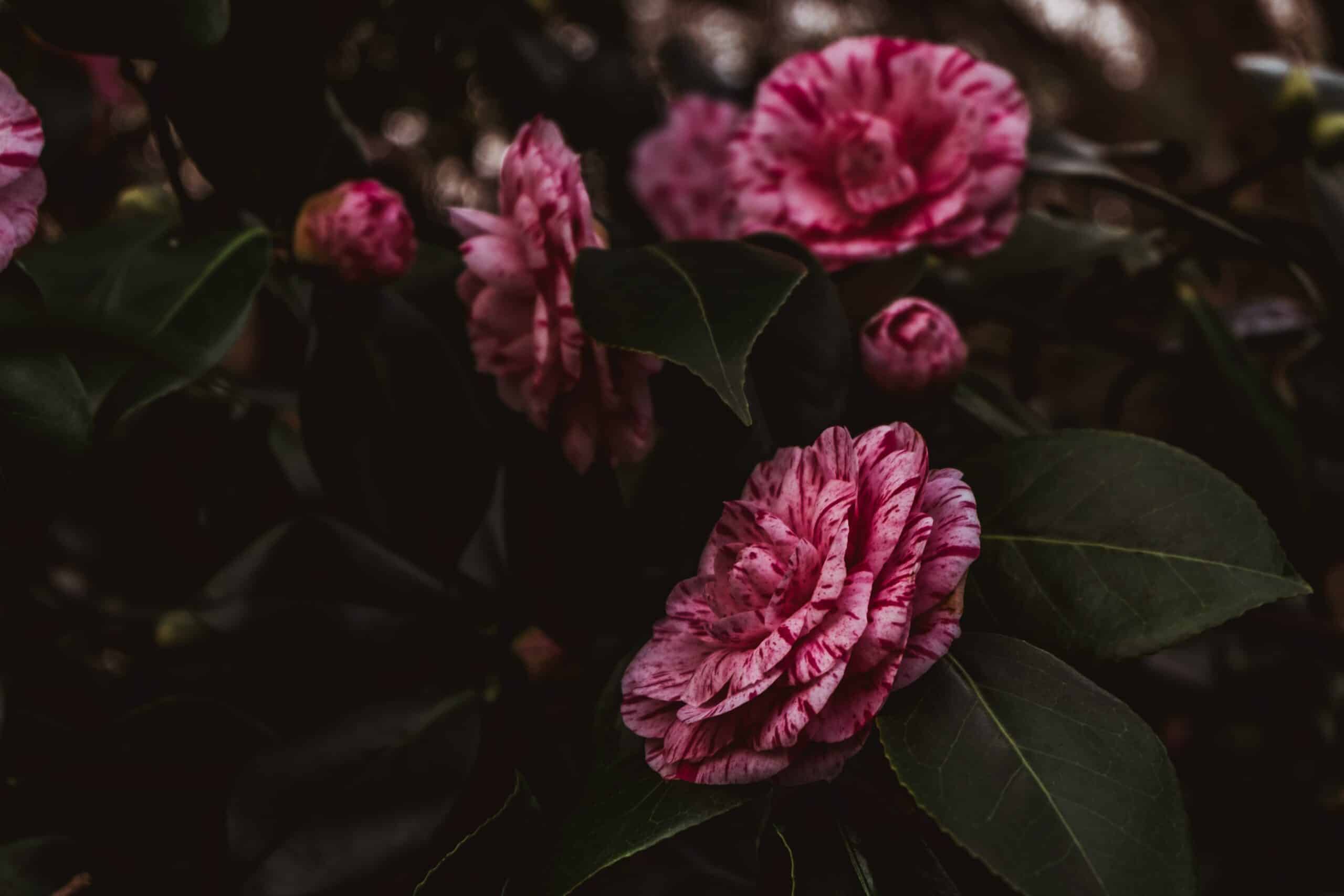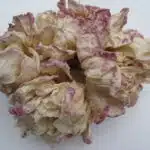Have you ever wondered how to grow beautiful, vibrant rose bushes in your own garden? Growing roses is a rewarding and enjoyable experience, whether you are a beginner or an experienced gardener. With the right knowledge and care, anyone can cultivate their own rose bushes. In this article, we will discuss the formula for growing and caring for rose bushes, so that you too can enjoy their beauty in your own backyard.
Roses have been prized since ancient times for their bright colors and sweet fragrance. Today, people around the world are still enjoying these amazing flowers in bouquets and gardens alike. As one of the most popular types of flowers grown in home gardens, roses require special care to thrive. Knowing how to properly plant, water, fertilize and prune your roses is essential for successful growth and bloom production.
From choosing the right rose bush for your climate to understanding when to prune for optimal blooms, there are many components that go into growing healthy rose bushes. With our step-by-step guide on how to grow beautiful rose bushes in your garden or landscape beds, you’ll be able to learn all the necessary steps needed to get lush blooms all season long!
Selecting The Right Type Of Rose Bush
When selecting a rose bush, it’s important to consider the type of rose and its suitability for your climate. Hybrid tea roses, which are among the most popular types of roses, thrive in full sun and need regular pruning to ensure maximum flowering. Floribunda roses produce clusters of small flowers and are ideal for large beds or hedges. Grandiflora roses are tall and can be used as a focal point in a garden. Additionally, miniature roses require little care and can be grown in containers or as borders.
When deciding on the best location for your rose bush, make sure it is in an area that receives at least six hours of direct sunlight per day. The soil should also be well-draining with plenty of organic matter added to help retain moisture levels. To protect against fungal diseases, it’s important to avoid planting too close to other plants or shrubs. Also be aware that some varieties of rose require extra protection from wind and frost damage during winter months.
Good preparation is key when it comes to growing healthy rose bushes. Soil testing will provide you with information about what amendments you may need to add before planting begins; this could include adding fertilizer or mulch for better drainage. Once planted, water regularly and make sure not to overwater as this can lead to root rot and other problems. Finally, keep an eye out for pests and disease so that any signs can be dealt with promptly – this will help keep your beautiful rose bush blooming all season long!
Planting Rose Bushes
Planting rose bushes is a crucial step in the process of growing and caring for them. It should be done carefully with attention to the depth, orientation, and soil type. It’s important to understand that roses are heavy feeders and require plenty of water, so it’s essential to prepare the soil before planting.
The best time to plant roses is in late winter or early spring when temperatures are mild. Start by selecting an area that has good drainage, some sun exposure, and access to water. Dig a hole twice as wide and just as deep as the root ball of the rose bush. Place the rose bush into the hole at ground level (no deeper) and spread out its roots. Add aged compost or manure for extra nutrition before filling up the hole with soil and tamping down lightly around the bush. Water deeply at first and then keep moist until established.
Finally, mulch around your rose bush with several inches of organic material such as straw or leaves to help retain moisture during hot summer months and protect from frost during cold winter months. This will also provide nutrients for your roses over time as it decomposes into the soil. TIP: If you’re using freshly cut stems from your own garden, make sure they don’t touch each other when arranging them in a vase!
Rose Bush Soil Requirements
When it comes to growing rose bushes, soil is the foundation for success. As any experienced gardener knows, a rose bush needs specific conditions in order to thrive. As such, understanding the right soil requirements is key when caring for these lovely plants.
The ideal soil for rose bushes should be well-draining, fertile and slightly acidic with a pH of 6-7. It should also contain plenty of organic matter to promote healthy root growth and retain nutrients. If your soil isn’t quite up to snuff, you can amend it with compost or peat moss to improve drainage and water retention. And don’t forget to add some fertilizer – roses love nitrogen!
Finally, one of the most important things you can do when planting rose bushes is ensure that they are getting enough sunlight – at least six hours a day is best. Soil preparation is important too; make sure it’s loose and not compacted so that the roots can easily expand without resistance. With these tips in mind, you’ll be off to a great start in creating lush garden beds full of blooming roses!
Fertilizing Rose Bushes
Picture in your mind the beauty of a rose bush in full bloom. The vibrant, deep red petals and the sweet fragrance of the flowers are an enchanting sight to behold. To ensure that your rose bushes stay healthy and beautiful, it is important to fertilize them properly.
As a specialist in gardening and botany, I can tell you that fertilizer provides essential nutrients for healthy growth and blooming of roses. Different types of fertilizers are available on the market, but it is important to select one that is specifically formulated for roses. Look for a fertilizer that contains phosphorus, nitrogen, and potassium as these are essential elements for healthy roses.
Fertilizing should be done every 4-6 weeks during the growing season, beginning after new growth has begun in springtime. Apply fertilizer at the base of each rose bush until it is soaked into the soil around its roots. Follow instructions on the packaging regarding how much fertilizer to apply and how often depending on the type you decide to use. Be sure not to apply too much as this may damage or burn your roses instead of helping them grow strong!
By understanding how to properly fertilize your rose bushes, you will be rewarded with beautiful blooms all season long! With proper care including correct fertilization, you will be able to enjoy these gorgeous flowers for years to come!
Watering Rose Bushes
Watering roses can be such a difficult task, can’t it? Well, there is no need to worry because the expert in botany and gardening is here to help. Let’s take a look at the five steps of watering rose bushes with ease and efficiency:
Always water your roses in the morning or evening. This will help ensure that they don’t dry out too quickly during the day and that they get enough water before it evaporates.
Water only when the top two inches of soil are dry. Overwatering can cause root rot and other diseases that can kill your roses, so make sure not to do this!
Never use a hose or sprinkler to water your roses – instead, use a watering can with a long spout so you can reach deep into the soil and give your roses more direct contact with the water source.
If possible, try to collect rainwater for your roses; rainwater tends to be better for them than tap water as it contains fewer chemicals.
Finally, remember that rose bushes need more water during hot weather or when they’re blooming – so keep an eye on them and adjust their watering schedule accordingly! In order for our beloved rose bushes to thrive, pruning is also necessary…
Pruning Rose Bushes
Pruning rose bushes is like getting a haircut for the plant; it’s an essential part of upkeep. Just like with people, too much or too little pruning can cause problems for the bush. A professional botanist or gardener knows exactly how to give roses their perfect trim. When pruning, start by cutting away dead, diseased, and weak branches first. This will help strengthen the surrounding stems and encourage new growth. Then carefully prune off any crossing branches that may be rubbing against each other and remove any suckers coming from below the graft. Finally, thin out some of the older shoots to make way for younger ones to grow in their place.
It’s important to know when and how much to prune roses as well as what type of cuts should be made. Prune during late winter or early spring before new growth begins, but after cold weather has passed. For most types of roses, aim to remove no more than one-third of their total stem length per year and always use sharp pruners that are disinfected between each cut.
Lastly, it’s important to remember that while pruning can be beneficial for rose bushes, it should still be done with care and precision in order to get the best results and ensure long-term health for your flowers. With a bit of patience and practice, you’ll soon learn how to give your plants the trim they need without compromising their beauty!
Controlling Rose Bush Pests
Controlling rose bush pests is like a game of chess. It requires careful planning and strategizing in order to win the match. As a specialist in botany and gardening, I’m here to help you understand the best tactics for controlling these pesky insects.
First off, it’s important to identify which type of pest is plaguing your roses. Once you’ve determined that, it’s time to choose the appropriate control technique. Depending on what kind of pest you’re dealing with, you may need to implement chemical or biological controls such as spraying insecticides or introducing natural predators into the garden.
In addition to using chemical or biological controls, there are also some cultural practices that can help keep the pests away from your roses. Regularly cleaning up debris around the plants helps remove areas where pests can hide and lay eggs. Also, avoiding over-fertilization can reduce the amount of nitrogen in the soil which can attract hungry insects looking for an easy meal.
Finally, it’s always smart to inspect your roses on a regular basis so that any pest problems can be identified early and dealt with quickly before they become more serious issues. With these tips in mind, you’ll soon be able to enjoy beautiful rose bushes free from any unwanted pests! Now let’s move on to training rose bushes for optimal health and blooming potential.
Training Rose Bushes
Training rose bushes is like art; it requires the keen eye of a master gardener. When done properly, these plants can become living sculptures that evoke admiration from visitors and passersby. With an understanding of the basics, you can begin to shape your rose bush into something truly special.
The first step in training is to select a strong central stem as the main leader of your plant. This should be pruned back each year to encourage branching out, while removing any weak or diseased growth. It’s important to monitor the height of your bush throughout the season and prune accordingly so that it remains at a manageable size. Additionally, if you wish to produce an impressive display of blooms, you can pinch off all buds except for one or two on each branch tip. This will promote flower growth and ensure that each bloom is well formed and abundant in color.
Finally, if you’ve been successful in developing a robust framework for your rose bush, then training it will be much easier in future years as its form becomes more established. Be sure to provide regular nourishment with water and fertilizer throughout the growing season for best results; this will give your rose bush plenty of energy to thrive and bloom!
Winter Protection For Rose Bushes
Winter protection of rose bushes is an important step in their care. As the temperatures dip, roses can suffer from frost damage if not properly cared for. To ensure your roses survive winter, there are a few things you can do.
Firstly, it is important to prune any dead growth from your roses before winter sets in. This will help remove any diseased or weak branches that could be prone to frost damage and provide more air circulation to the plant. Additionally, use a 3-4 inch layer of mulch around the base of the bush to protect its roots from cold weather. This will also help insulate the roots and keep them warm during cold snaps.
Finally, when temperatures drop below zero degrees Fahrenheit, use a cloth or plastic wrap to cover the entire bush in order to protect it from freezing temperatures. This should only be done when necessary as prolonged exposure under these covers can lead to fungal diseases on the foliage. With these steps taken, your rose bushes should make it through winter unscathed and ready for beautiful blooms come springtime!
The next step in rose bush care is deadheading. Deadheading helps encourage future blooms by removing faded flowers and preventing them from going to seed…
Deadheading Rose Bushes
Deadheading rose bushes is akin to giving them a much-needed haircut. It is an important step in the maintenance of these beautiful plants. Botanists and gardeners alike understand that proper pruning can help increase bloom production, keep the bush looking neat, and reduce disease issues.
Deadheading roses is a simple process that requires only a few tools and some basic knowledge. Using sharp, clean scissors or pruners, remove spent flowers from the bush. Deadheading should be done every spring and summer after each flush of blooms has faded. Be sure to cut just above the first five-leaflet leaf cluster on the stem. Doing this will promote new growth from that point on the stem and will give you more blooms throughout the growing season.
When deadheading roses, it’s also important to inspect your plants for signs of disease or insect infestation while you are pruning. Remove any diseased foliage or stems as soon as possible to prevent further spread of pests and diseases within your garden. Additionally, removing dead flowers helps reduce fungal spores in the air, which can cause additional problems with your roses down the road if left unchecked. With this in mind, transitioning into staking rose bushes is an important part of keeping them healthy and strong during periods of heavy wind or wet soil conditions.
Staking Rose Bushes
Staking rose bushes is an important step in ensuring that the plants are adequately supported. As roses grow, the weight of their blooms can cause them to lean and become unstable if not properly supported. Proper staking will help keep the bush upright and prevent it from falling over or becoming damaged by heavy rains or strong winds. The type of stake used depends on the size and weight of the bush; generally, a wooden stake is sufficient for smaller-sized roses, while larger varieties may require a metal support structure.
When staking a rose bush, make sure to use a long enough stake that reaches deep into the ground, as this will provide more stability than one that only extends partway. Secure the stake firmly with string or twine at several points along its length to ensure that it won’t move when wind gusts hit it. It’s also important to place stakes away from the main stem of the bush to avoid causing damage or stunting growth.
Finally, when staking your rose bush, be sure to check it periodically for signs of wear and tear such as fraying twine or loose stakes, which could indicate that the support structure needs to be replaced or reinforced. This will ensure your rose bush remains stable and healthy throughout its growing cycle. With careful attention and regular maintenance, your rose bushes should remain upright and beautiful for years to come!
To further protect your roses from inclement weather, consider mulching around their base with organic material like straw or wood chips. This will help keep moisture in the soil and insulate roots against extreme temperatures during hot summers or cold winters.
Mulching Rose Bushes
Mulching rose bushes is the final step in growing a vibrant and healthy garden of rose bushes. It’s like wrapping a blanket of comfort around your plants, protecting them from the cold winter frost and harsh summer heat. With mulch, you can create an optimum growing environment for your roses. As a specialist in botany and gardening, I’m here to provide you with all the necessary information about mulching roses.
When mulching roses, it’s important to use either organic or inorganic material that is laid over the soil at its base. This helps keep moisture levels consistent and helps protect against weeds. Organic materials such as shredded bark, straw, or compost are best because they break down naturally over time, providing additional nutrients as they decompose. Inorganic materials such as black plastic also work well by preventing weeds from taking root and helping retain water in the soil.
When applying mulch to your rose bushes, make sure not to pile it up too high or too close to their crowns. Too much mulch will stifle growth while too little won’t provide enough insulation or weed control. Remember to add some fresh mulch annually so that it maintains an even depth throughout the season; this will ensure that your roses have access to all the necessary nutrients they need to thrive!
With these tips in mind, you’re now ready to propagate rose bushes – giving your garden a beautiful array of blooms!
Propagating Rose Bushes
Propagating rose bushes is an excellent way to increase the number of beautiful specimens available in your garden. While it can be a complicated process, with the right technique and some patience, you can successfully reproduce these wonderful flowers. In this article, we will explain the basics of propagating roses through cuttings or seedlings.
The most common method used to propagate roses is by taking cuttings from existing mature plants. Cuttings should be taken at least six inches long and include a few leaf buds at the tip. The cutting should then be planted in moist soil and kept in a warm area until it has rooted – typically after four to six weeks. Once rooted, the cutting can then be transplanted into its own pot or directly into the garden.
Alternatively, you can also propagate roses from seedlings. It is best to start with seeds that have been aged for two years as they are less likely to contain diseases or pathogens. The seeds should be planted in a small container filled with a good quality soil mix, such as composted manure or peat moss. The container should be kept moist and in an area where temperatures stay between 70°F (21°C) to 80°F (26°C). As soon as seedlings appear, they should be transplanted into individual containers or directly into their permanent location outdoors.
Whether using cuttings or seedlings, propagating roses takes time and patience but offers rewards of many beautiful blooms that will bring joy throughout the growing season! Now let’s explore some common rose bush diseases and how they can be treated.
Common Rose Bush Diseases
Ah, rose bushes… the bane of many a gardener’s existence! Despite their beauty, they can come with their fair share of challenges. Unfortunately, one of the most common challenges is disease. While roses are generally quite hardy plants, there are still certain diseases that can affect them and cause a lot of damage. Let’s take a look at some of the more common rose bush diseases and what you can do to combat them.
The most well-known disease is black spot, which is caused by a fungus called Diplocarpon rosae. Black spot causes dark spots on the leaves of the rose bush and eventually leads to defoliation. To prevent this from happening, it’s important to keep your roses well pruned and make sure they get plenty of sunlight and air circulation. You should also remove any affected leaves as soon as you see them and dispose of them away from your other plants.
Another common disease that affects rose bushes is powdery mildew, which is caused by different fungi depending on the type of rose bush you have. Powdery mildew is characterized by white or gray powdery patches on the leaves that can eventually lead to leaf drop if left untreated. The best way to combat this is to ensure your roses get plenty of sunlight and airflow, as well as proper pruning so that there isn’t too much foliage for the fungus to take hold in. Additionally, treating affected plants with sulfur-based fungicides can help control it before it gets out of hand.
So while all these diseases may seem daunting at first glance, with proper care and attention they can be kept under control so your rose bushes stay healthy and beautiful! By keeping an eye out for signs of disease and taking appropriate steps when needed, you should be able to enjoy your roses for years to come without having to worry about them falling victim to any kind of illness or pest infestation. With just a bit of dedication and patience, your garden will always be looking its best! Now let’s move on to troubleshooting problems with our beloved rose bushes!
Troubleshooting Rose Bush Problems
Growing roses can be a beautiful and rewarding experience, but the reality is that rose bushes come with their fair share of problems and troubleshooting. 15. Troubleshooting Rose Bush Problems is an important component of successful rose care. While plenty of gardeners have scored success with their roses, research shows that almost 80% of all rose bushes suffer from some form of disease or pest damage at some point in their life cycle. Here are a few tips for troubleshooting common rose bush issues:
Make sure your plants are getting the right amount of water and fertilizer. Roses need plenty of moisture, but not too much; fertilize them every few weeks to ensure they’re getting the nutrients they need for optimal growth.
Keep an eye out for pests like aphids, mealybugs, or spider mites, which can wreak havoc on your rose bush if left unchecked. Use natural pest control methods to keep these pests at bay without harming your plants.
If you notice yellowing or wilting leaves, it could be a sign that your plant isn’t getting enough sunlight or air circulation. Move the plant to a sunnier location and trim away any overgrown branches to improve air flow around the plant.
Prune away dead wood and damaged stems regularly to encourage new growth and maintain healthy foliage. Pruning also helps promote better air circulation which can reduce the risk of fungal diseases like black spot or powdery mildew from taking hold on your roses.
As an experienced gardener knows, troubleshooting rose bush problems is essential for keeping these fragile plants happy and healthy! With just a bit of regular maintenance, you can keep your roses looking beautiful year-round with minimal effort required on your part.
Frequently Asked Questions
What Is The Best Time Of Year To Plant Rose Bushes?
The best time to plant rose bushes is a question of the utmost importance for any gardening enthusiast. While many people believe that springtime is the ideal season, experienced botanists know that fall can be just as productive. Figuratively speaking, planting roses in autumn is like nurturing a flame in the cold depths of winter – you’ll be rewarded with a beautiful bloom come summer!
When deciding when to plant, it’s important to consider your local climate and soil type. While roses prefer well-draining soil and full sun exposure, how long your winter season lasts will determine just how early or late you should plant them. For those in cooler climates, late August or early September are ideal times; while those in milder climates may find success planting as late as mid-October.
No matter when you choose to get started on your garden, there are certain steps you can take to ensure success. Be sure to thoroughly water the area before planting so that the soil is moist but not soggy. After adding compost and fertilizer to help provide additional nutrients for the plants, it’s time for you to get planting! Dig holes slightly bigger than each rose bush’s root ball and allow some space between each hole for future growth. Finally, cover with soil and pat down gently before providing one final deep watering – this will help keep your roses healthy throughout their growing season.
How Often Should Rose Bushes Be Fertilized?
When it comes to caring for rose bushes, fertilizing is as essential as water. A good idiom to remember when it comes to fertilizing rose bushes is “A little goes a long way”. As an experienced botanist and gardener, I can tell you that regular fertilization is one of the most important steps in keeping your roses looking their best.
The first step in determining how often to fertilize rose bushes is deciding what type of fertilizer you will be using. Fertilizers come in a variety of forms such as organic or chemical-based. Depending on the type of fertilizer chosen, frequency will vary. Organic-based fertilizers are generally applied every six weeks while chemical-based fertilizers should be used monthly or bi-monthly depending on the product label instructions. It’s important to take note that too much fertilizer can damage your plants, so it’s important to follow these guidelines for best results.
Another key factor in determining how often to fertilize your rose bushes is determining the stage of growth they are currently in. Rose bushes generally need more fertilizer when they are actively growing and blooming, which typically occurs during spring and summer months. During these times, an increase in the amount and frequency of fertilizer should be applied accordingly. During winter months when growth has slowed down, less frequent applications of a lower strength fertilizer should be used instead.
Fertilizer plays an essential role in helping roses reach their full potential so following these guidelines can ensure success with beautiful blooms all season long!
How Do I Know When To Prune My Rose Bush?
One of the most common questions asked by those who have been gifted with a rose bush, or those that are looking to add one to their garden, is when and how to prune it. As with any plant, proper pruning techniques can yield beautiful results and ensure that the rose bush will live a long and healthy life.
While many people overlook the importance of pruning for their plants, ironcially it is one of the best ways to keep your rose bush in optimum health. Pruning helps to encourage new growth and to prevent disease. It also helps you create an aesthetically pleasing shape which can enhance your garden’s overall look.
To ensure success in pruning your rose bush there are several things you should consider: •tTiming: The best time of year to prune a rose bush is during late winter or early spring before new growth begins. •tTools: You’ll need a pair of sharp hand shears or Secateurs and gardening gloves for protection from thorns. •tThe Cut: Start by removing any dead wood or damaged stems. Then cut branches back to just above an outward facing bud at an angle so that water isn’t caught at the base of the stem causing rot. •tShape: Aim for creating a nice dome-like shape while cutting away crossing branches that may be rubbing against each other which could cause damage over time. •tFinish Up: After all cuts have been made, use a fungicide spray on the entire bush as added protection against disease.
As with all plants, proper care is key when it comes to maintaining a healthy and vibrant rose bush in your garden; however, it doesn’t take much effort at all! By following these simple steps you’ll be able to enjoy beautiful blooms with minimal effort season after season!
What Is The Best Way To Protect Rose Bushes From Winter Cold?
Protecting rose bushes from cold winter temperatures is critical in ensuring that they remain healthy and vibrant. The best way to do this depends on the type of roses you have, as well as your local climate. For example, if you live in an area with harsher winters, you may need to take more precautions than those living in milder climates.
Firstly, you should always mulch around the base of your rose bush with a thick layer of mulch or straw. This will help insulate the roots from the cold and prevent them from freezing and thawing. Additionally, it’s important to prune your roses back before winter arrives so that there are fewer canes and leaves exposed to the cold weather. You should also consider providing extra shelter for your roses by wrapping them in burlap or fabric if possible.
Finally, if you live in an area with particularly cold winters, it’s important for you to build a framework around the plants to protect them from strong winds and harsh frost. This frame should be tall enough to completely cover the rose bush but still allow some air circulation so that it doesn’t become too hot during sunny days. Taking these steps now will ensure that your rose bush survives through winter without any damage and can thrive again when spring returns.
How Do I Know If My Rose Bush Is Suffering From A Disease?
Roses can be a beautiful addition to gardens, but they also require special care. The first step in taking care of your rose bush is to learn how to recognize the signs that it may be suffering from a disease. By understanding the symptoms and possible causes, you can provide your rose bush with the best chance at growing healthy and strong.
Imagery: Visualize a lush garden filled with vibrant roses in full bloom – their deep red petals beckoning you closer. This is what we all want for our rose bushes – vibrant health. To ensure that our roses reach their fullest potential, it is important to know how to recognize the signs of disease.
The most common signs of disease in rose bushes include: wilting or discolored leaves, black spots on leaves, browning or yellowing between leaf veins, or stunted growth. If you notice any of these symptoms, it’s important to take action right away as diseases can spread quickly if left unchecked.
Fortunately, there are steps you can take to help prevent or manage diseases in your rose bush. Here are three tips for keeping your rose bush healthy: • Prune regularly and deadhead spent flowers to increase air circulation • Water deeply once per week during dry periods • Add organic matter such as compost or manure around the base of the plant each year
By following these simple steps and being mindful of potential signs of disease, you will give your roses every chance at becoming a stunning part of your garden!
Conclusion
The rose bush is a beautiful addition to any garden and can be enjoyed for years to come with proper maintenance. Although planting, pruning, and fertilizing may seem daunting, the results are well worth the effort. With the right care and attention, each season can bring vibrant colors and fragrant blooms that will surely make your neighbors jealous.
But even with all this knowledge of how to properly grow rose bushes, one thing remains true: they are still incredibly delicate plants. Despite our best efforts to protect them from winter cold and diseases, there is always a chance that something could go wrong. We must accept that we cannot always control nature’s whims and prepare ourselves for any potential losses along the way.
So while it’s important to take care of our beloved rose bushes, it’s also important to remember that no matter how hard we try, we can never guarantee success in gardening – ironic as it may sound!





























